

|
|
Heli (Blu-ray)
[Blu-ray]
Blu-ray B - United Kingdom - Network Review written by and copyright: Paul Lewis (28th August 2014). |
|
The Film
 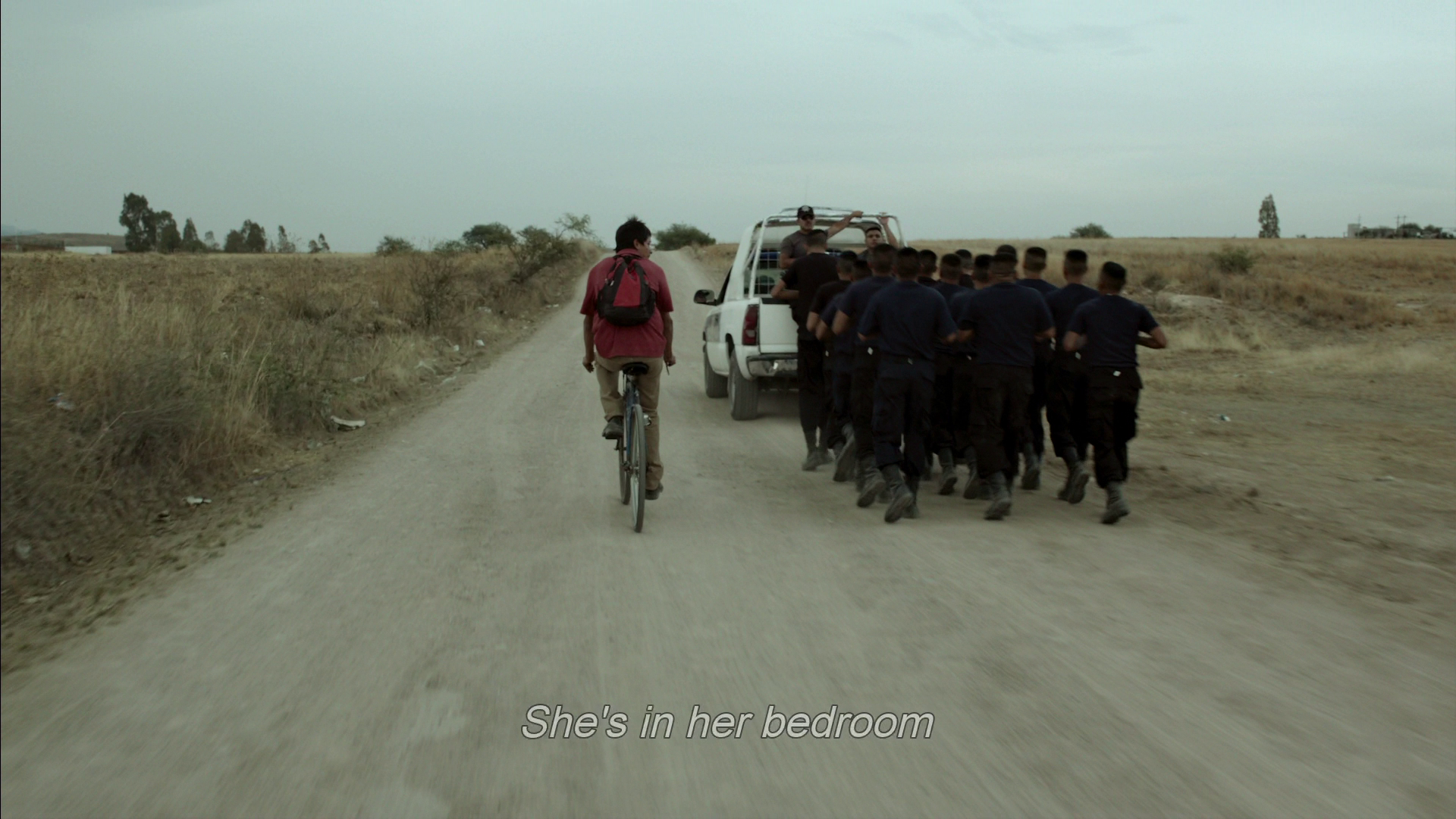 Heli (Amat Escalante, 2013) Heli (Amat Escalante, 2013)
Heli Alberto Silva (Armando Espitia), a worker in a car factory, lives with his wife Sabrina (Linda González) and baby, father and younger sister Estela (Andrea Vergara, who is 12. They share a small two-bedroomed house and live in poverty. Heli is frustrated with his life and bored in his relationship with Sabrina; since having the baby, their marriage has gone sour. Meanwhile, Estela is conducting a secret relationship with a 17 year old police recruit, Beto (Juan Eduardo Palacios. During a government initiative to burn drugs and counterfeit goods seized in police raids, in an attempt to win the faith of the local population, Beto ‘rescues’ some of the drugs from the fire. He sees them as a way of getting rich quick, promising Estela that they will marry. Beto hides the drugs (a brick of what appears to be either cocaine or heroin) in the water tank on top of Heli’s family’s house. Discovering the drugs that Beto has hidden in the water tank, Heli takes them out to a field and disposes of them by cutting open the brick and allowing the contents to spill out into a ditch. Later, Heli’s house is raided by men dressed in police uniforms. Heli’s father is killed, and Heli, Estela and Beto are captured and taken to the gang’s hideout, where Beto is tortured and finally killed. Heli manages to escape and returns home, numbed by his experiences. However, Estela is still in the grip of the gang. Young Mexican filmmaker Amat Escalante’s third feature film, Heli (2013) follows Sangre (Blood, 2005) and Los Bastardos (2008). Escalante’s films may be considered part of the nuevo cine Mexicano (New Mexican Cinema/Mexican New Wave), which has existed since the late-1960s but gained added impetus during the early 2000s, with films such as Alfonso Cuarón’s Y tu mamá también (And Your Mother Too, 2001) and Alejandro González Iñárritu’s Amores perros (2000). Escalante’s mentor Carlos Reygadas, who produced Escalante’s first feature film, Sangre, is a key figure of the contemporary nuevo cinema Mexicano, having directed Japon (Japan, 2002) and Batalla en el cielo (Battle in Heaven, 2005). During the 1990s and into the 2000s, Mexican cinema became increasingly focused on global audiences, owing to the international success of films such as Amores perros and Y tu mamá también (and the increasing international profile of Guillermo del Toro). The films also came to focus largely on the exploration of profound cultural issues within narratives focused on outwardly mundane situations. (Guillermo del Toro’s films – such as El espinazo del Diablo/The Devil’s Backbone, 2001, and Cronos, 1994 – stand out in their focus on fantastical scenarios.) Escalante’s Los Bastardos, for example, focuses on undocumented Mexican day labourers in the US who, at the climax of the film, turn the tables on the culture that exploited them through an act of violence that, for them, seems to be cathartic. The violence at the narrative’s climax is unexpected owing to the film’s documentary style; and Los Bastardos may be seen as offering for Mexican viewers a sympathetic portrait of Mexican labourers and the exploitation they face (the frustrations of which lead to their use of violence), whilst also, for certain American audiences, pandering to the anti-immigration lobby who perceive all such paisanos as potentially violent criminals. Likewise, Heli may be seen equally as highlighting important current issues within Mexican society, or pandering to stereotypes about Mexican culture.  >Escalante’s use of long takes and a static camera, in both Los Bastardos and Sangre, and his examination of violence have led to comparisons with both Michael Haneke and Bruno Dumont. Certainly, the photographic objectivity (cold, impassive compositions), the absence of music and the overriding sensation of anguish and loss in Sangre may be compared with Haneke’s style, and the ‘home invasion’ sequence in Los Bastardos invites comparison with Haneke’s Funny Games (1997). However, the long takes and static camerawork in Escalante’s pictures may just as easily be compared with the work of Sergio Leone, who in interviews Escalante has cited as an inspiration. In Sight & Sound’s 2012 Greatest Films Poll, Escalante nominated Leone’s The Good, the Bad and the Ugly (1966) as one of his ten favourite films, with a one-word justification for his choice: ‘Faces’ (Escalante, 2012: np). >Escalante’s use of long takes and a static camera, in both Los Bastardos and Sangre, and his examination of violence have led to comparisons with both Michael Haneke and Bruno Dumont. Certainly, the photographic objectivity (cold, impassive compositions), the absence of music and the overriding sensation of anguish and loss in Sangre may be compared with Haneke’s style, and the ‘home invasion’ sequence in Los Bastardos invites comparison with Haneke’s Funny Games (1997). However, the long takes and static camerawork in Escalante’s pictures may just as easily be compared with the work of Sergio Leone, who in interviews Escalante has cited as an inspiration. In Sight & Sound’s 2012 Greatest Films Poll, Escalante nominated Leone’s The Good, the Bad and the Ugly (1966) as one of his ten favourite films, with a one-word justification for his choice: ‘Faces’ (Escalante, 2012: np).
In interviews, Escalante has also professed a love of gore and horror films and, in particular, the work of Dario Argento (cited in Christie, 2014: np). In one sequence, Escalante marries this fascination with cinematic gore with the aesthetics of the brutal home-made death/torture footage associated with the Mexican cartels (such as Los Zetas, the Sinaloa cartel, and the Knights Templar), as Beto is tortured by being strung from the rafters by chains, beaten with a wooden plank, and his genitals are set on fire (lighter fluid is poured over his penis and testicles and lit). In one interview, Escalante suggests that the film is as much inspired by the work of genre filmmakers like Leone and Argento as it is by ‘the current situation in Mexico […] I love gore films, Dario Argento, Stanley Kubrick, strong films. The drug stuff is just something I know I can make a story with’ (Escalante, quoted in ibid.). The sequence also highlights the casual acceptance of violence within these criminal gangs. As Beto is tortured, we are shown shots of the other gang members, including a very young boy named Morocho, sitting around on bare mattresses, drinking beer, smoking dope and playing video games. For these gang members, their captives (Beto and Heli) ‘are worthless’. ‘What did this one do?’, Morocho asks and older boy. ‘Who knows’, is the nonchalant reply. The gaze of the other gang members as Beto is tortured is impassive: the sadistic spectacle of Beto being beaten and his genitals set alight provokes no reaction. One of the gang members says, ‘Record it, man. We’ll put it on Youtube’.  The film was intended to highlight ‘what everybody knows in Mexico’, the violence of the drug cartels, ‘and I basically made a story about those things, but searching for the characters and the human side of things (Escalante, quoted in Christie, op cit.: np). The ‘fact that they are young men and children’ who are torturing Heli and Beto ‘emphasizes the problem that exits’ (Escalante, quoted in Aguilar, 2014: np). The youths represent ‘the future of Mexico’, who are committing this horrific act of violence: ‘they are what I think is the most delicate part of this situation, and they are the only hope’ (Escalante, quoted in ibid.). The images shown within the film are familiar to Mexican audiences, Escalante says, ‘the images of hangings or beheadings etc, in newspapers and magazines’; but Escalante wanted to ‘go beyond that’, to explore the ‘story of one of these families […] that have been destroyed or affected’ by the ‘War on Drugs’ (Escalante, quoted in Christie, op cit.: np). However, as the opening sequence suggests, the iconography of the news footage revolving around the Mexican cartels is, within the film, confused with the aesthetic of Sergio Leone’s Italian Westerns. The film begins with two young men (later revealed to be Heli and Beto; the opening sequence is a prolepsis of sorts) slumped in the flatbed of a moving pickup truck, their limbs bound and their mouths covered with tape. The camera slowly pans across their bodies and tilts up to reveal the driver and passenger of the pickup that is carrying Heli and Beto, shot through the rear window of the cab. The camera dollies forwards slowly; the soundtrack emphasises the diegetic sounds of the journey (gravel crunching under the tyres; the engine of the vehicle rumbling). The truck reaches its destination. The men in the cab retrieve one of the young men, Beto, from the flatbed, carrying his limp body over to a footbridge that crosses a road. A shot from the road below the footbridge shows the men throwing Beto’s body over the rail of the footbridge. His body swings and hangs beneath it. The film was intended to highlight ‘what everybody knows in Mexico’, the violence of the drug cartels, ‘and I basically made a story about those things, but searching for the characters and the human side of things (Escalante, quoted in Christie, op cit.: np). The ‘fact that they are young men and children’ who are torturing Heli and Beto ‘emphasizes the problem that exits’ (Escalante, quoted in Aguilar, 2014: np). The youths represent ‘the future of Mexico’, who are committing this horrific act of violence: ‘they are what I think is the most delicate part of this situation, and they are the only hope’ (Escalante, quoted in ibid.). The images shown within the film are familiar to Mexican audiences, Escalante says, ‘the images of hangings or beheadings etc, in newspapers and magazines’; but Escalante wanted to ‘go beyond that’, to explore the ‘story of one of these families […] that have been destroyed or affected’ by the ‘War on Drugs’ (Escalante, quoted in Christie, op cit.: np). However, as the opening sequence suggests, the iconography of the news footage revolving around the Mexican cartels is, within the film, confused with the aesthetic of Sergio Leone’s Italian Westerns. The film begins with two young men (later revealed to be Heli and Beto; the opening sequence is a prolepsis of sorts) slumped in the flatbed of a moving pickup truck, their limbs bound and their mouths covered with tape. The camera slowly pans across their bodies and tilts up to reveal the driver and passenger of the pickup that is carrying Heli and Beto, shot through the rear window of the cab. The camera dollies forwards slowly; the soundtrack emphasises the diegetic sounds of the journey (gravel crunching under the tyres; the engine of the vehicle rumbling). The truck reaches its destination. The men in the cab retrieve one of the young men, Beto, from the flatbed, carrying his limp body over to a footbridge that crosses a road. A shot from the road below the footbridge shows the men throwing Beto’s body over the rail of the footbridge. His body swings and hangs beneath it.
The long takes, slow and deliberate camerawork, absence of non-diegetic music and expressionistic use of diegetic sounds (which almost form a sort of musique concrete score), combined with the undercurrent of violence which bubbles to the surface at the end of the sequence with the hanging of beto from the footbridge, is reminiscent of the work of Leone. In terms of the filmic techniques on display, the sequence may be compared with the famous opening sequence of Leone’s Once Upon a Time in the West (1968), which begins with a protracted sequence depicting three gunmen (Al Muloch, Woody Strode and Jack Elam) waiting for a train at a deserted station. The sequence emphasises the length of their wait through the use of long takes; unaccompanied by non-diegetic music or by the human voice, the sequence contains an expressionistic use of diegetic sounds (the buzzing fly, the creak of the station’s weathervane). It builds up to a moment of abrupt violence as Harmonica (Charles Bronson) steps off the train and shoots the three gunmen. Heli’s opening sequence uses similar techniques, but the iconography is unmistakably that of the still images and footage associated with the drug cartels in Mexico, where bodies of informers or members of rival gangs are often hung from road bridges by the cartels as a means of sending a message. (Jonathan Glazer’s recent Under the Skin, 2013, has an opening sequence that uses a similar set of techniques, but has invited comparisons with David Lynch and Stanley Kubrick, another filmmaker who Escalante admires.) 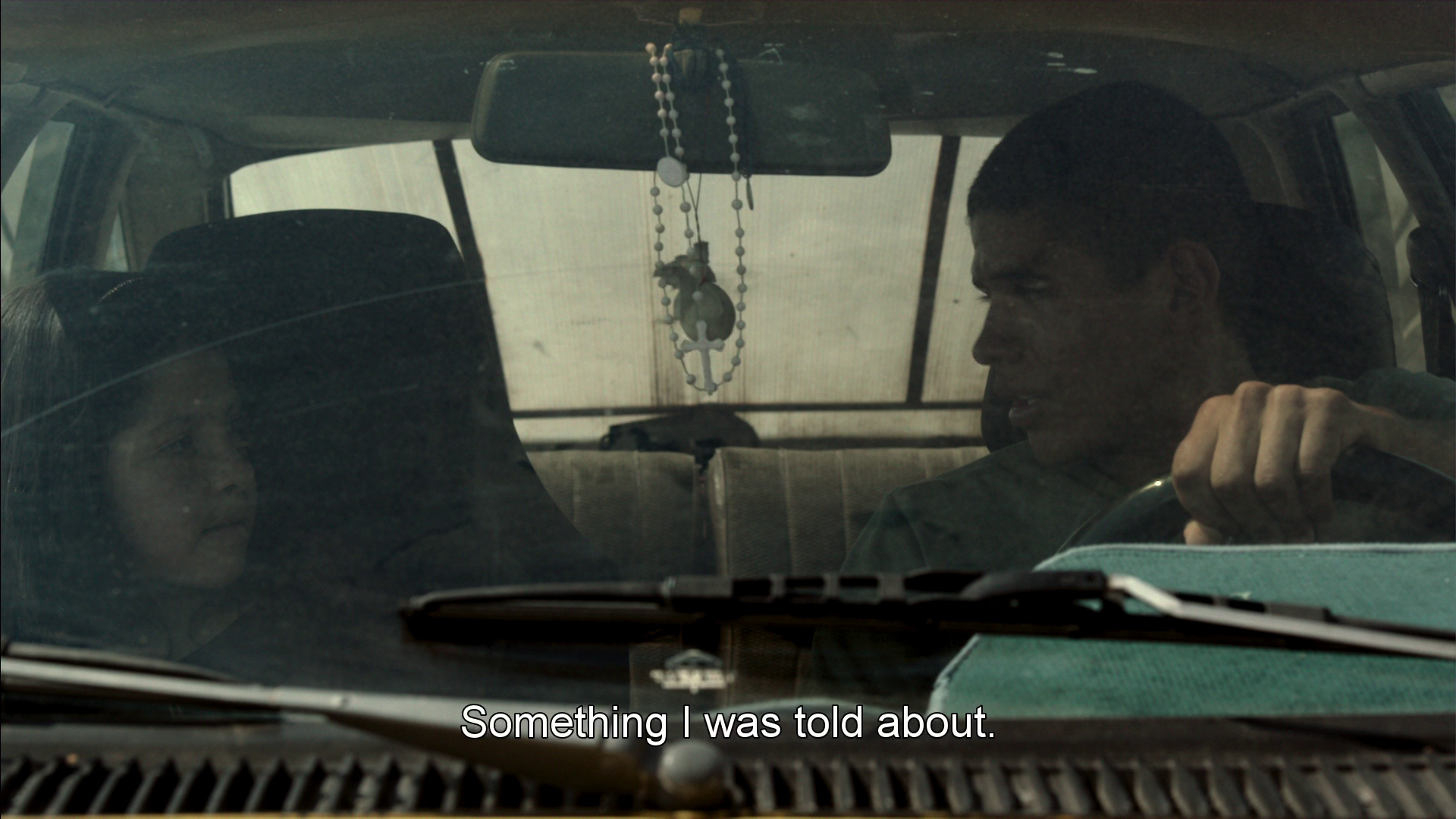 Escalante also seems to emphasise how unfulfilling (and meaningless) both Heli and Beto’s (very different) jobs are. In an early sequence, Heli cycles to work and Escalante shows, when Heli arrives at the plant, the slightly surreal sight of the factory workers exercising en masse before beginning their shift. Escalante then cuts to shots of machinery in the plant, seemingly inviting us to read these shots as symbolic of the dehumanisation and depersonalisation associated with such mechanised labour processes. (It’s probably unintentional, but the scenes in the factory recall those of the factor in which Albert Finney’s Arthur Seaton works in that British New Wave classic, Karel Reisz’s film adaptation of Saturday Night and Sunday Morning, 1960; there’s the same tone of wearying, meaningless work coupled with a repression of the soul.) Escalante also seems to emphasise how unfulfilling (and meaningless) both Heli and Beto’s (very different) jobs are. In an early sequence, Heli cycles to work and Escalante shows, when Heli arrives at the plant, the slightly surreal sight of the factory workers exercising en masse before beginning their shift. Escalante then cuts to shots of machinery in the plant, seemingly inviting us to read these shots as symbolic of the dehumanisation and depersonalisation associated with such mechanised labour processes. (It’s probably unintentional, but the scenes in the factory recall those of the factor in which Albert Finney’s Arthur Seaton works in that British New Wave classic, Karel Reisz’s film adaptation of Saturday Night and Sunday Morning, 1960; there’s the same tone of wearying, meaningless work coupled with a repression of the soul.)
Beto’s job is little different. Though Beto claims, in conversation with Estela, to be happy in his work as a police recruit, a sequence showing the recruits during their training suggests otherwise. Escalante introduces the sequence showing their training regime with shots of the recruits running along the road (Heli passes them on his bicycle, on his way to the factory; at this point, he’s unaware of Beto’s identity). Whilst they run, the recruits sing a military-style cadence with a misogynistic subtext: ‘She’s in her bedroom / I’m in her bedroom / She’s in her bed / I’m in her bed / She’s started crying / Because she was a virgin’. The lyrics of the cadence highlight the extent to which the culture of machismo pervades Mexican society, possibly even legitimating Beto’s continuous attempts to persuade the young Estela to sleep with him. During his training, Beto vomits through overexercise. He is ordered to lay on the ground, and an American – who seems to be there to teach the recruits torture and interrogation techniques – demands that Beto roll in his own vomit. He is also held forcibly over a cesspit, water poured over his face. Both Beto and Heli are shown in dehumanising jobs, with no promise of escaping the trap of their poverty. (The sequence is, Escalante has claimed, ‘a shot-by-shot reenactment of a video on Youtube’ depicting the torture techniques used by Mexican police; Escalante, cited in Director Talk, 2014: np.) Escalante’s film also seems to suggest that education offers no means of escaping poverty either. When Heli returns home from the factory one evening, he discovers Estela studying. He asks her what she is reading, and she tells him: ‘Explanation of social processes, communication, conflicts, decision-making, cooperation. That sort of thing’. Heli, who must have passed through a similar syllabus during his formal education, tells Estela: ‘I don’t remember any of that’. ‘At your age, I probably won’t either’, Estela responds dryly. Education is thus shown as having little to no relationship with the lives of proletarian works such as Heli; Heli’s reaction suggests that the information gleaned through education achieves nothing and is, in the long term, forgotten. Again, Escalante returns to the theme of youth as symbolic of the future, ‘to show the spectator that they [the youth of Mexico] are the most vulnerable part and the ones we should care for’ (Escalante, quoted in Aguilar, op cit.: np). The film is uncut and runs for 104:58 mins. 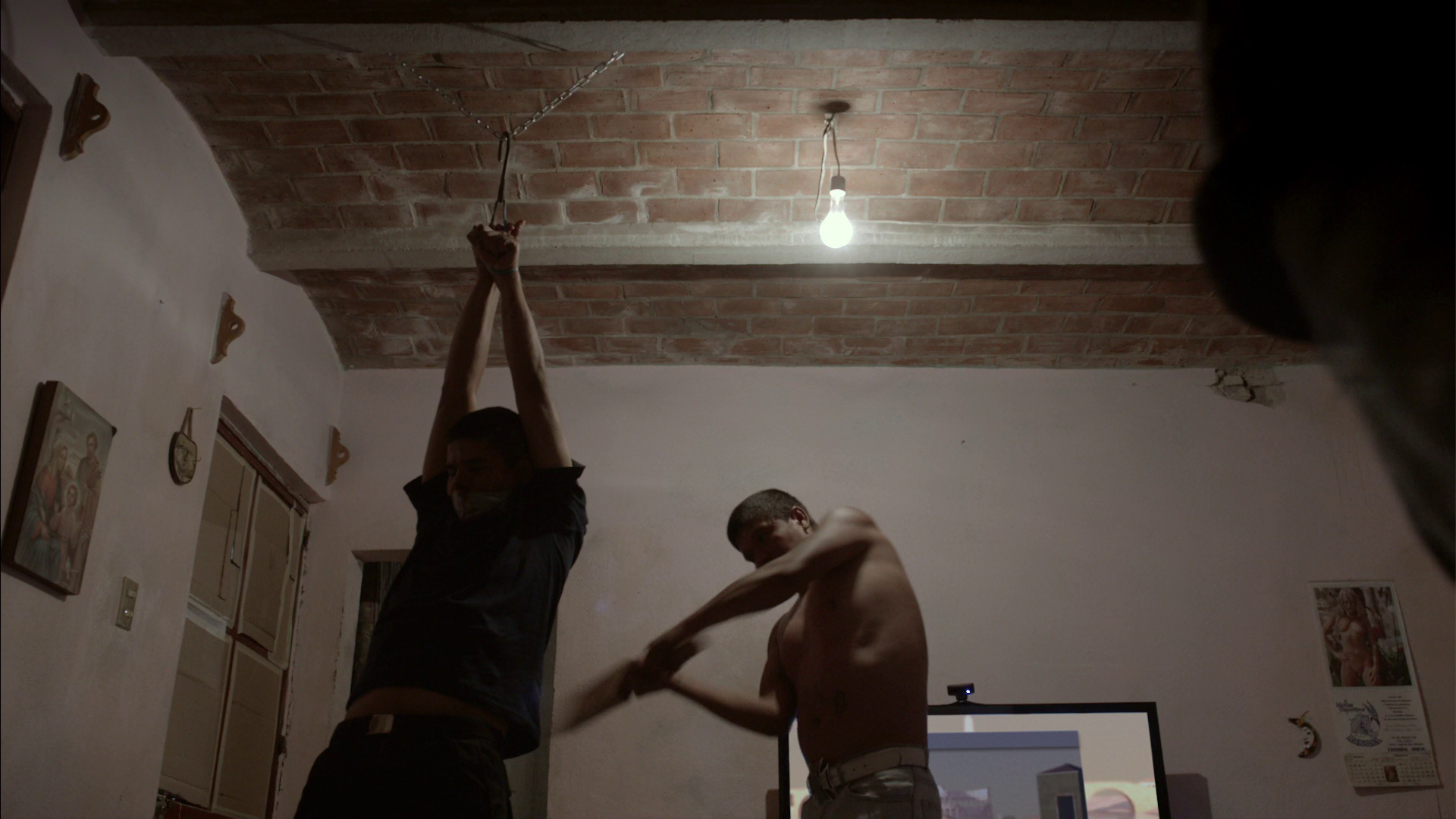
Video
The film is presented in an aspect ratio of 1.78:1. The presentation uses the AVC codec and takes up approximately 20Gb of a single-layered Blu-ray disc. It’s a solid presentation of the film, containing good contrast, highlighting the naturalistic photography in low-light scenes and interiors, and strong colours. 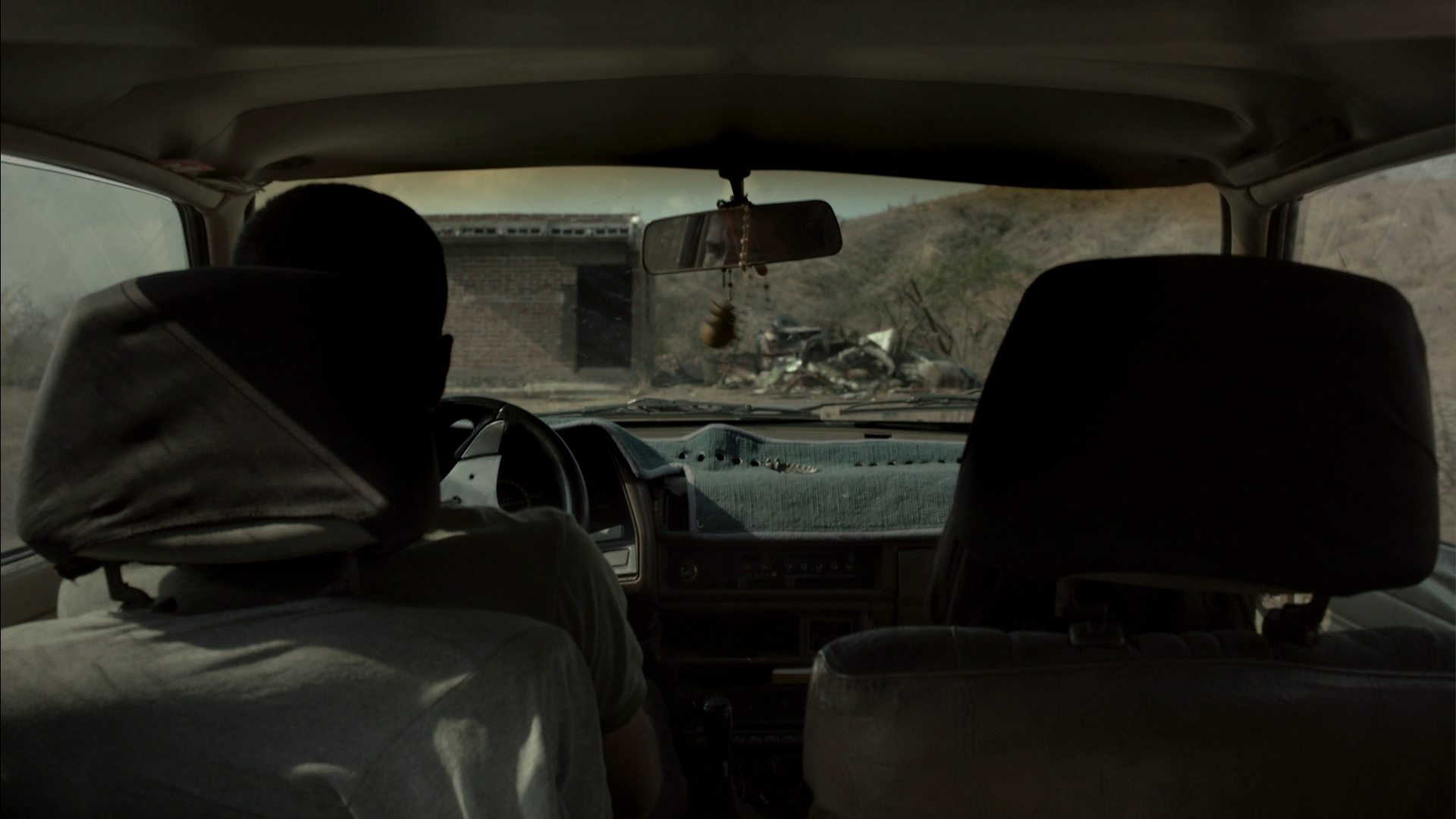 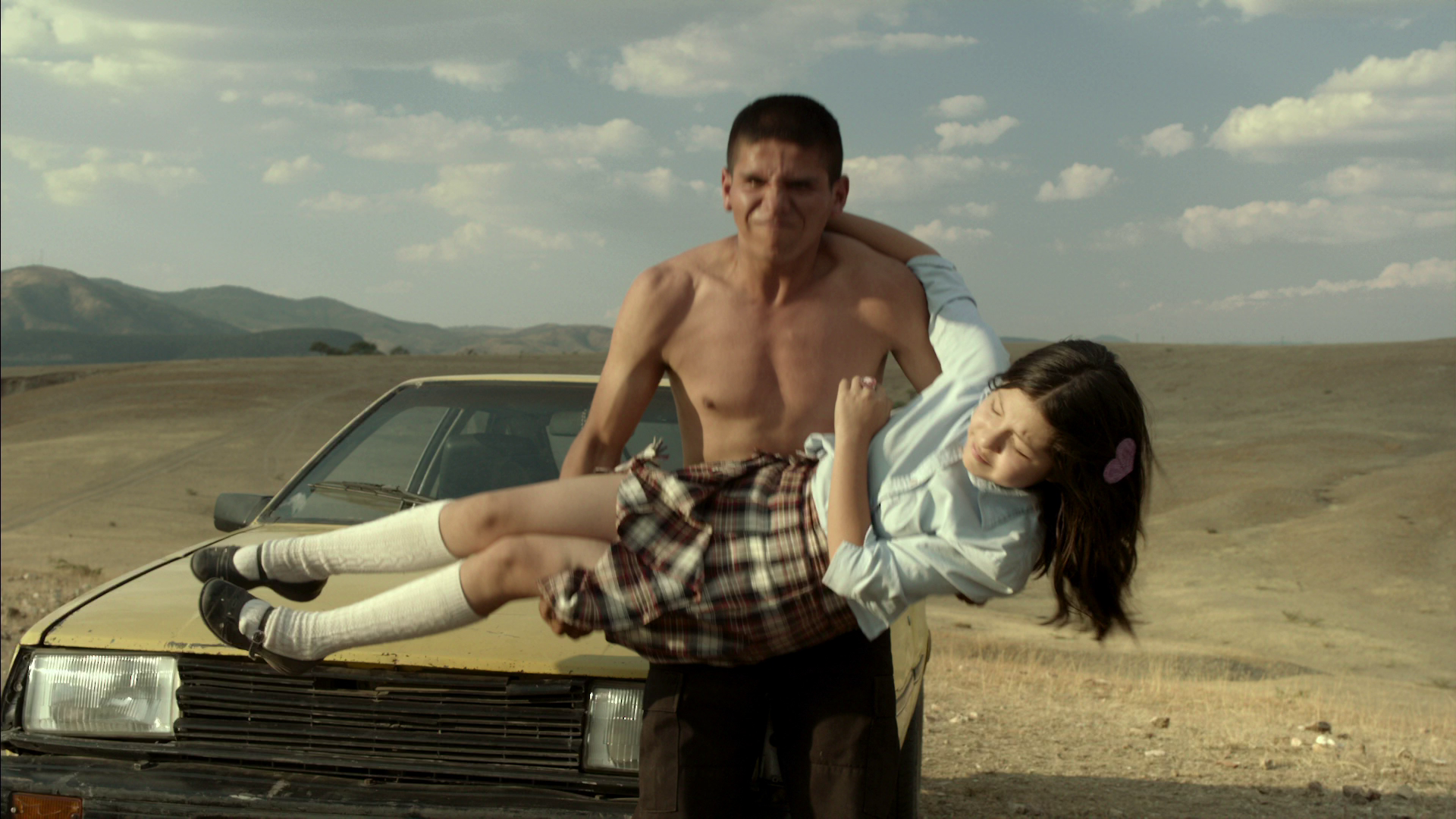
Larger screen grabs are at the bottom of this review.
Audio
Spoken language is Mexican Spanish. There are two audio options present on the disc: a DTS-HD Master Audio 5.1 mix and a LPCM 2.0 stereo channel. Both of these are fine. The 5.1 mix is rich and enveloping when it needs to be (the surround channels are used effectively in the opening sequence, for example, as we hear the sound of the truck carrying Heli and Beto driving over gravel). English subtitles are readable throughout, but they aren’t optional: they’re burnt-in.
Extras
Aside from the film’s trailer, the disc includes a documentary, ‘The Making of Heli’ (44:27). This documentary includes some interesting behind-the-scenes footage. The principal cast of non-professional actors are interviews. Their stories are sometimes as interesting as the film itself. In all, it’s a fascinating documentary which is definitely worth watching. The documentary is in Mexican Spanish, with burnt-in English subtitles. Also included is a ‘Q&A with Amat Escalante’ (7:07). This is, as the title suggests, a question and answer session with Escalante. It’s in English and interspersed with clips from the film. Escalante talks largely about the film’s social context. It’s an interesting interview, but subtitles would have been a helpful addition, given the situation in which it’s recorded (in an auditorium with an audience).
Overall
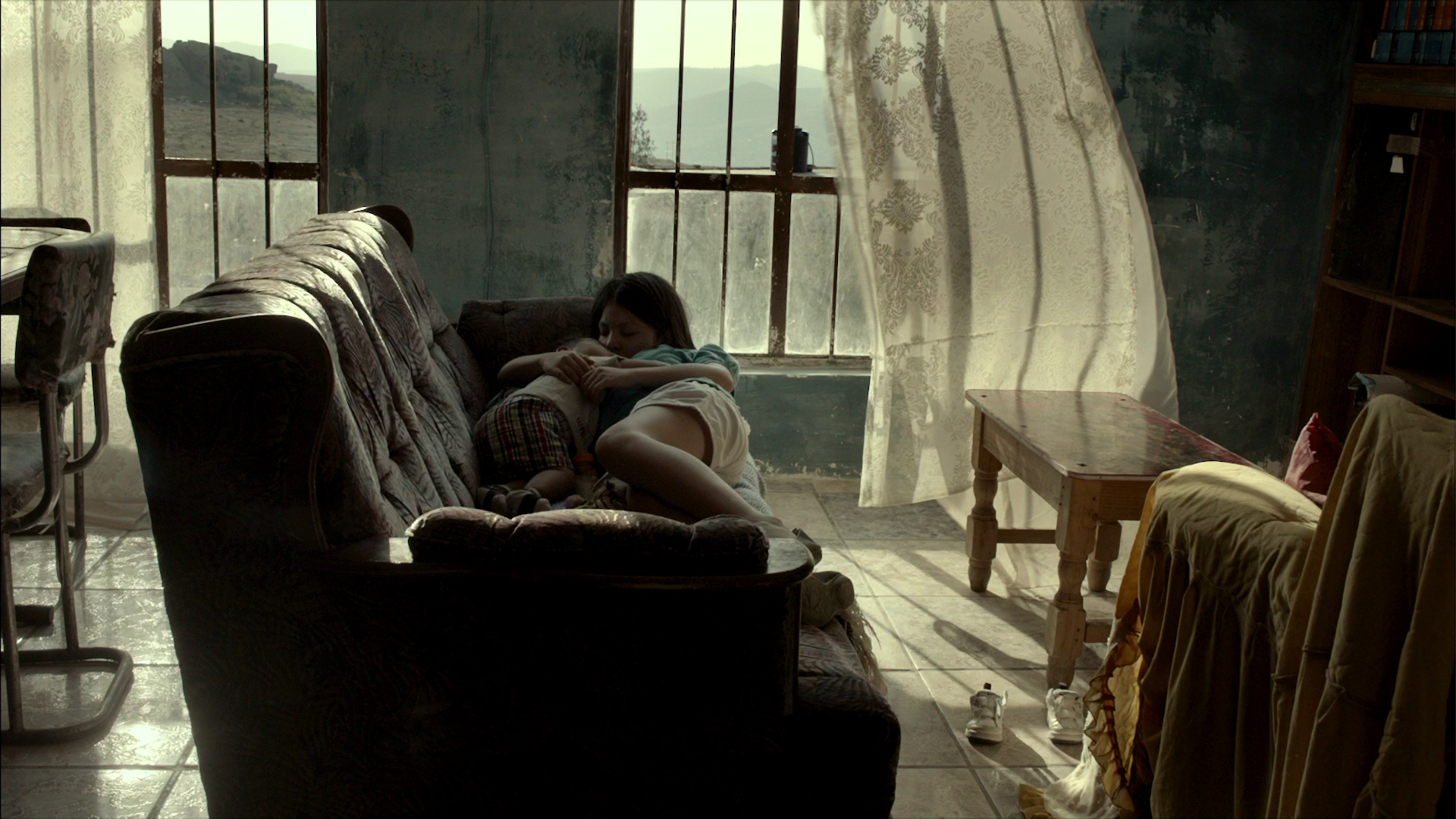 Heli is as much a film informed by its immediate social context (the violence of the drug cartels; the iconography of the drug wars that has appeared in the news media and on the Internet) as it is by cinema history (aside from the nods to Leone, Kubrick, etc, some of the set-up, including Heli’s claustrophobic and frustrated life with his wife and baby, recalls David Lynch’s Eraserhead, 1977, or possibly Buddy Giovinnazo’s Combat Shock, 1984). Escalante’s technique works well with the material, but like Los Bastardos the film seems to have the potential to be interpreted in two very different ways: it may be taken as either a sympathetic depiction of the lives of Mexico’s proletariat, or alternatively it may be interpreted as a reactionary picture that panders to cultural stereotypes. (Escalante’s subtle critique of the education system seems deeply conservative, for example.) The tension between these two readings is arguably what makes Los Bastardos and Heli such interesting films. Regardless, the film offers a fascinating portrait of a society numbed by violence. It’s a bleak film, certainly, but the closing sequence contains fragments of hope. There’s a clear lineage with Escalante’s previous two feature films, and Escalante is developing into a fascinating auteur. Heli is as much a film informed by its immediate social context (the violence of the drug cartels; the iconography of the drug wars that has appeared in the news media and on the Internet) as it is by cinema history (aside from the nods to Leone, Kubrick, etc, some of the set-up, including Heli’s claustrophobic and frustrated life with his wife and baby, recalls David Lynch’s Eraserhead, 1977, or possibly Buddy Giovinnazo’s Combat Shock, 1984). Escalante’s technique works well with the material, but like Los Bastardos the film seems to have the potential to be interpreted in two very different ways: it may be taken as either a sympathetic depiction of the lives of Mexico’s proletariat, or alternatively it may be interpreted as a reactionary picture that panders to cultural stereotypes. (Escalante’s subtle critique of the education system seems deeply conservative, for example.) The tension between these two readings is arguably what makes Los Bastardos and Heli such interesting films. Regardless, the film offers a fascinating portrait of a society numbed by violence. It’s a bleak film, certainly, but the closing sequence contains fragments of hope. There’s a clear lineage with Escalante’s previous two feature films, and Escalante is developing into a fascinating auteur.
This release contains a good presentation of the film and some interesting contextual material. The detailed documentary about the production is very good indeed. Sadly, the English subtitles aren’t optional, and the size of the file is arguably a little measly. References: Aguilar, Carlos, 2014: ‘LatinoBuzz: Amat Escalante, 'Heli' and Cinema as a Cathartic Medium’. [Online.] http://blogs.indiewire.com/sydneylevine/interview-amat-escalante-on-his-film-heli-mexico-foreign-language-oscar-submissions-international-film-business Christie, Tom, 2014: ‘Mexican Director Amat Escalante Talks Violent Love Story 'Heli,' Out Now in Select Cities’. [Online.] http://blogs.indiewire.com/thompsononhollywood/cannes-interview-mexican-director-amat-escalante-talks-violent-love-story-heli Director Talk, 2014: ‘Heli/Amat Escalante’. [Online.] http://earthwize.org/wordpress/directortalk/2014/06/17/heliamat-escalante/ Escalante, Amat, 2012: ‘Sight & Sound: The Greatest Films Poll’. [Online.] http://explore.bfi.org.uk/sightandsoundpolls/2012/voter/859 This review has been kindly sponsored by:  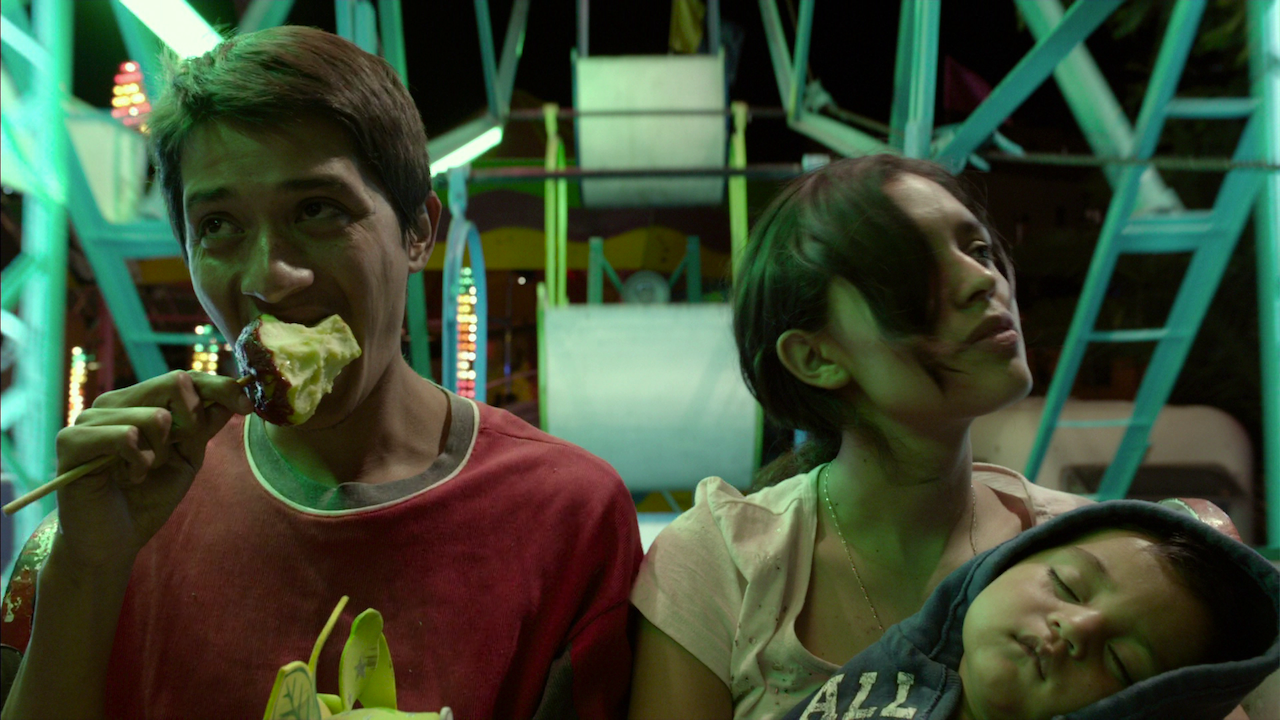
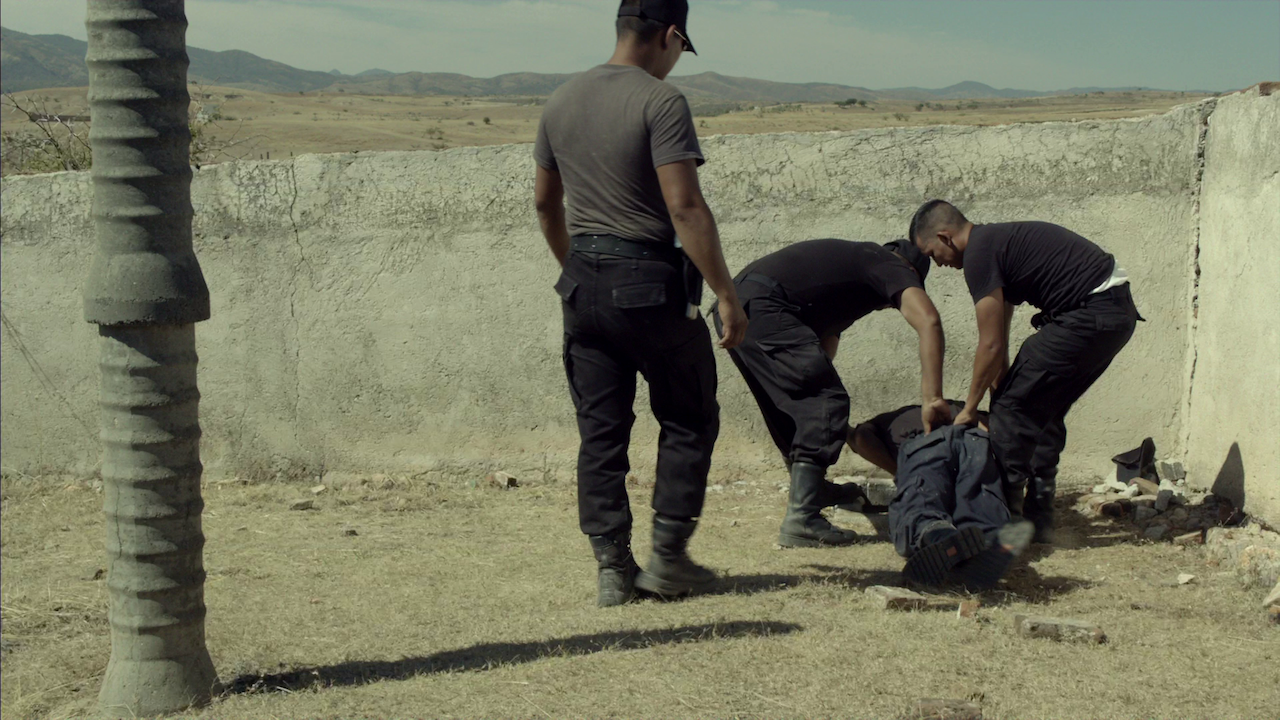
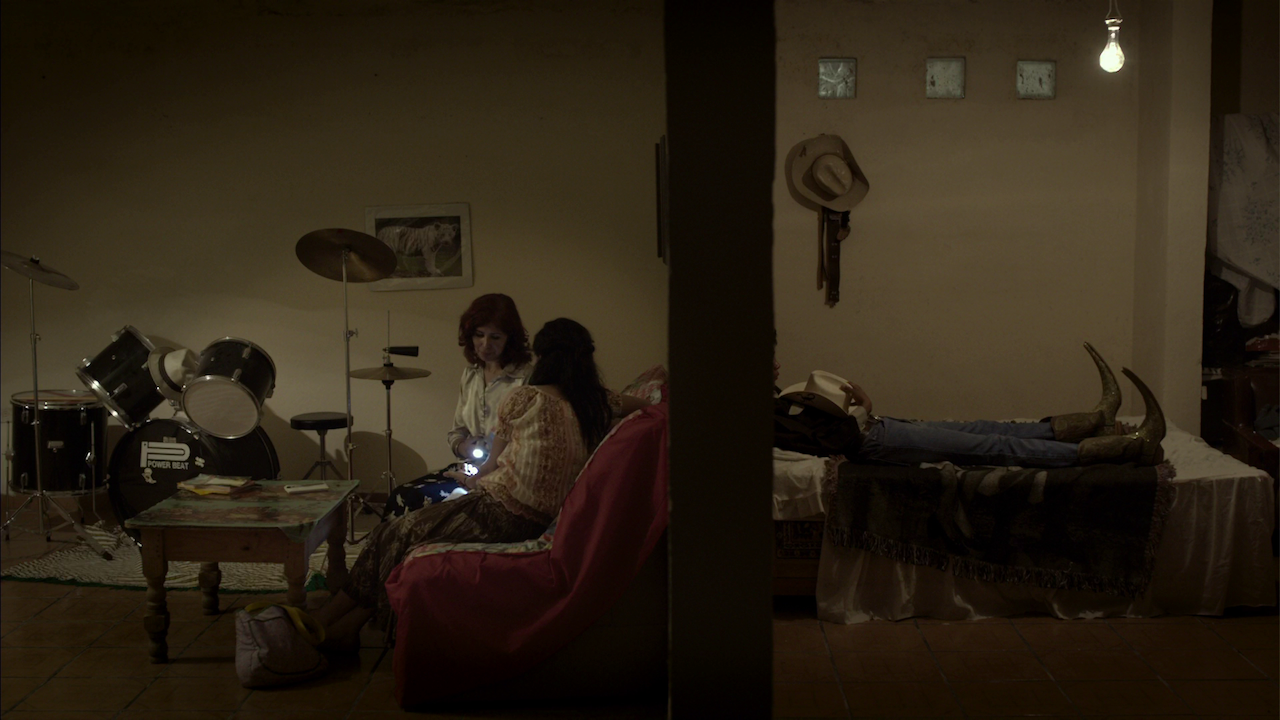
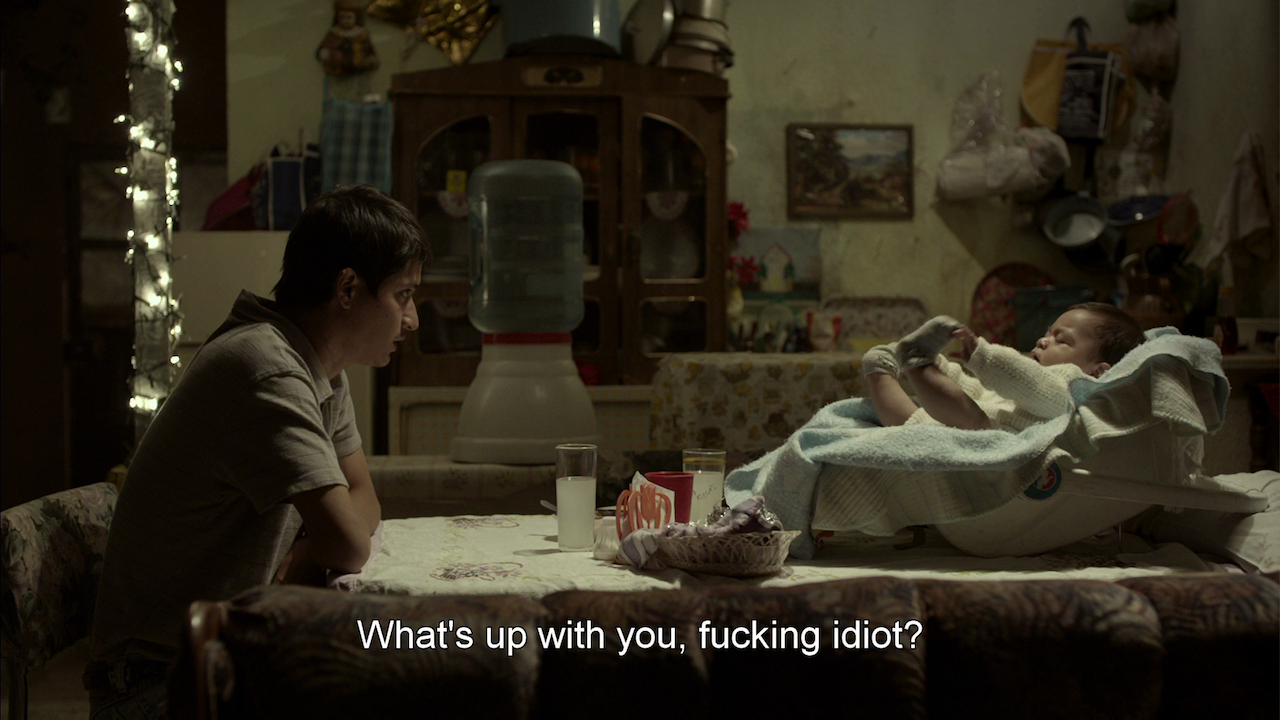
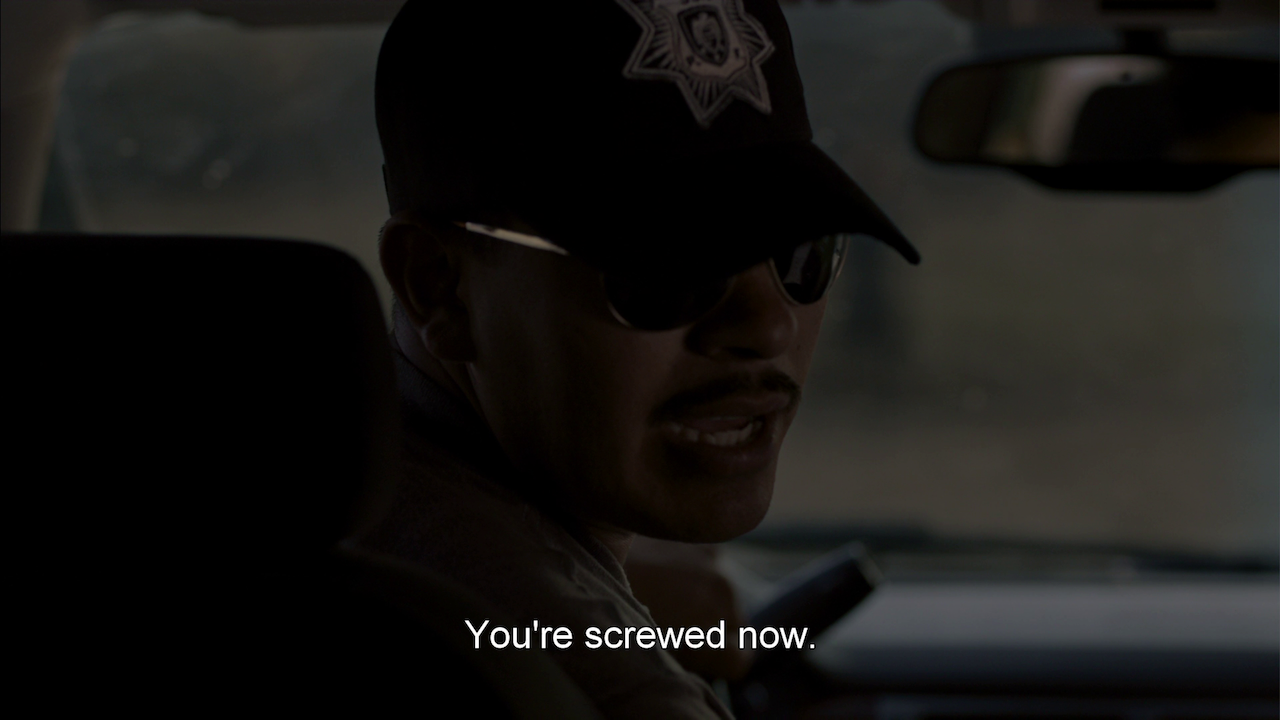
|
|||||

|